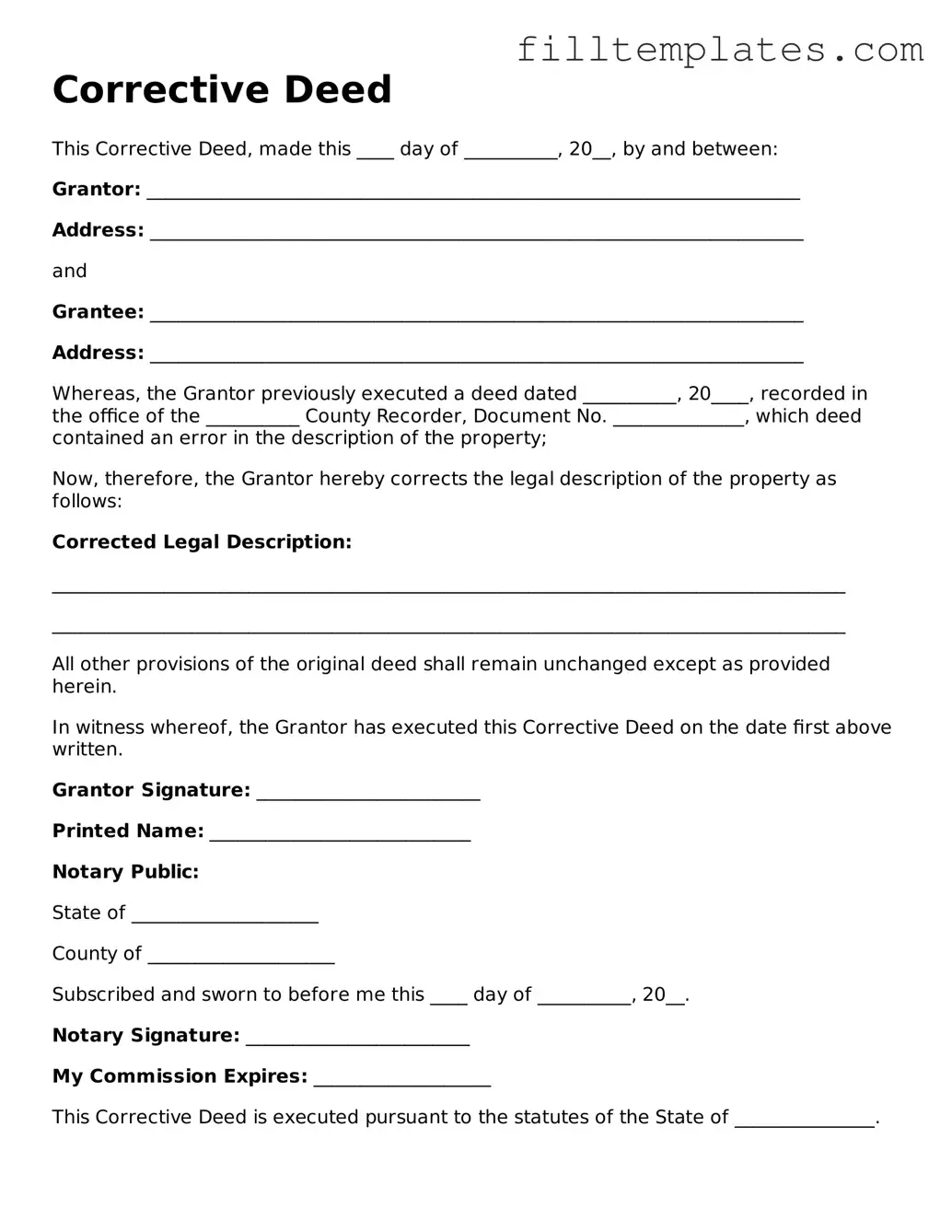Corrective Deed
This Corrective Deed, made this ____ day of __________, 20__, by and between:
Grantor: ______________________________________________________________________
Address: ______________________________________________________________________
and
Grantee: ______________________________________________________________________
Address: ______________________________________________________________________
Whereas, the Grantor previously executed a deed dated __________, 20____, recorded in the office of the __________ County Recorder, Document No. ______________, which deed contained an error in the description of the property;
Now, therefore, the Grantor hereby corrects the legal description of the property as follows:
Corrected Legal Description:
_____________________________________________________________________________________
_____________________________________________________________________________________
All other provisions of the original deed shall remain unchanged except as provided herein.
In witness whereof, the Grantor has executed this Corrective Deed on the date first above written.
Grantor Signature: ________________________
Printed Name: ____________________________
Notary Public:
State of ____________________
County of ____________________
Subscribed and sworn to before me this ____ day of __________, 20__.
Notary Signature: ________________________
My Commission Expires: ___________________
This Corrective Deed is executed pursuant to the statutes of the State of _______________.
